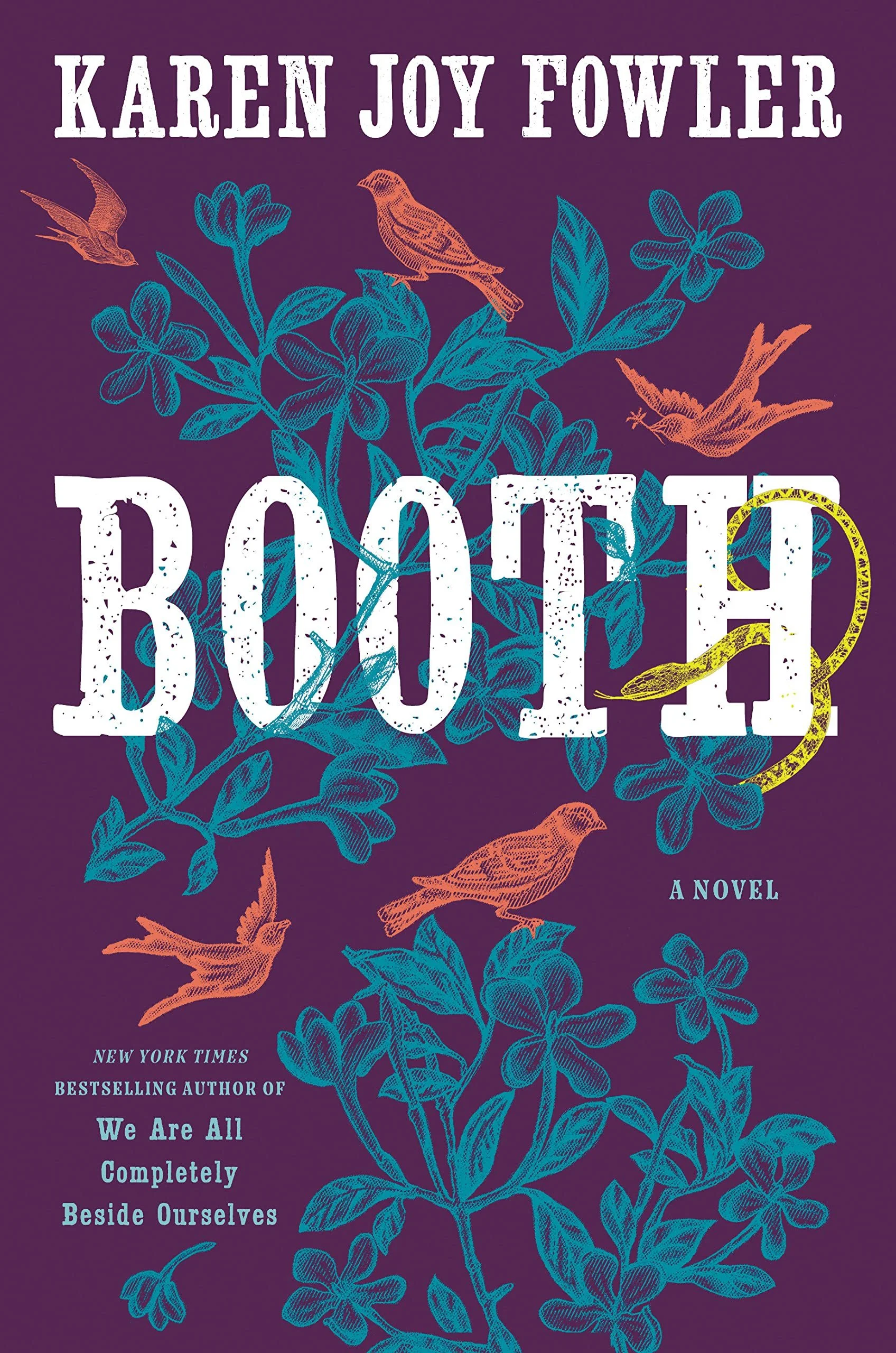Book Review - Booth by Karen Joy Fowler
As a history lover who squeamishly made my way to fiction, Booth by Karen Joy Fowler offered the perfect mixture of real historical context with fictional craft elements. It was slow to get started, a hurdle many readers will have trouble getting over, but by the end all I could say was “Brilliant.”
This 480 page novel starts in 1822 with the story of a mysterious family that moves into a cabin on the outskirts of town. We learn little else before the author, Fowler, jumps forward to 1838 and dives into the historical context surrounding Abraham Lincoln and American politics at that time. The history and the fiction alike start out dry, even confusing. There’s very little to draw the reader in and even less to provide confidence the flatness and dryness is leading us somewhere valuable. The novel continues this way alternating between history and character. But as the story progresses the characters take hold, the history settles in, and most importantly, the writing elevates it all.
We see Rosalie, the eldest daughter of Junius Brutus Booth and Mary Ann Booth, as she navigates a harsh world. As the daughter of a famous alcoholic actor, Rosalie must also cope with the death of her siblings who are taken by various diseases. We move on to Edwin, the second son, then Asia, the second daughter, and so on, seeing the ever-changing, complicated world through the eyes of the Booth children. In between are short but informative snippets of Lincoln and his stage in life and politics. The story moves forward, chronologically, building tension as the country approaches war and the family withstands tragedy and approaches doom.
Never do we see the world through the eyes of John Wilkes, a conscious choice made by the author to avoid glorifying an infamous man who took Lincoln’s life and his own in the name of bigotry. This is one of many of Fowler’s stylistic choices that make the story work so well. By ignoring John, Fowler zooms in on the other Booth’s with an intimacy that makes the story heartbreaking, real, and tragically human. The first peak we get of this style is a scene told through the eyes of young Rosalie. She’s told to go get the mail, but she’s reticent and we’re made keenly aware of the fear she has about walking past the family graveyard where both siblings and slaves are buried. The author writes…
“Mother believes that her dead children are all eating from golden plates and flying about on silken wings, but Rosalie knows otherwise. She feels the breeze-like fingers of the three children buried nearby. They touch her face, her neck, whisper excitedly about this living thing on the path. They weave about her, web her in, whispering about the things that she evokes in their memories: churned butter honey biscuits warm milk bonnet ties when the wind blows little redcap little redbreast perhaps when you’ve taken a nap your little white cheek will be red didn’t you ever dream of a house up on a treetop the sea you can be sure of it.
Stars, hide your fires, they tell her, Don’t leave us here.”
It’s this intimacy; the kind of detail that is so close that it can only come from Rosalie, that makes the story thrive. It can only come from a nine-year-old girl. And everything after that, Fowler wins. She wins. Every character is treated with the same care, the same intimacy. This gives the author a tremendous amount of leeway. She can provide historical context and not break us from the story. She can also pan out, which she does quite often, and not sever us from the mind’s of the characters. She zooms in and zooms out moving the narrator from a great distance to no distance at all.
Another reason this works—another way she gives herself leeway—is because of the seemingly innocuous details that are so minute they must be real. Whether it’s a yowling cat, the difference in warmth between right and left cheeks, or the smell of a woman’s lilac perfume, the details work in concert with the characters as if the only way to know, the only way to think of such things, would be to be there. And though deep down we know it’s made up, the details are used with such closeness and timing that they are absolutely convincing.
I could go on like this, praising Fowler’s ability to harness craft while teaching history at the same time. But not every reader is wrapped up in a story the same way an editor becomes when analyzing its finer elements. Still, I cannot forget to mention that Shakespeare lovers will also find this novel irresistible as the Booths spend more than enough time reciting line upon memorized line of Shakespeare in their own casual and playful dialogue. Whether they actually spoke in such charming banter matters little. What Fowler has created is a world beyond history, beyond storytelling. It’s a universe of its own where we can all see ourselves in some small way. It’s a story that truly makes the past real even when it’s not.
Please join History Through Fiction for What's New in Historical Fiction, a regular panel series featuring historical novelists with new and upcoming titles. Moderated by History Through Fiction editor, Colin Mustful, this special panel features:
Vanessa Hua, author of Forbidden City
Karen Joy Fowler, author of Booth
Dahlma Llanos-Figueroa, author of A Woman of Endurance
Lorraine Heath, author of Girls of Flight City


